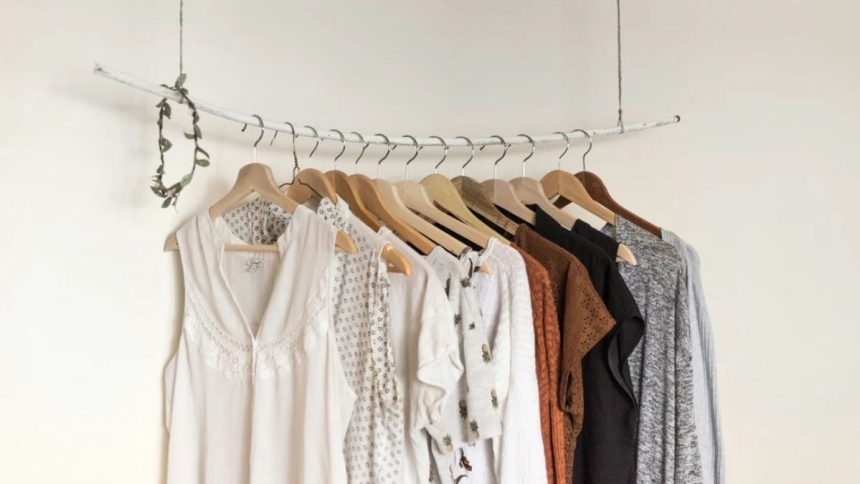Many older adults and people with disabilities face daily challenges that make dressing difficult, impacting their comfort and sense of dignity. Adaptive clothing offers practical solutions designed specifically to simplify these tasks. By integrating features like easy closures and flexible fabrics, adaptive clothing helps restore independence and improves the everyday lives of those who need it most.
This type of clothing prioritizes comfort and accessibility without sacrificing style, allowing wearers to feel confident and maintain control over their routines. For the elderly, brands offering adaptive apparel combine functionality with design to ensure clothing supports mobility while preserving personal dignity. Options from innovative providers like Joe & Bella enhance comfort and ease, helping individuals navigate dressing with less pain and frustration.
Accessible, thoughtfully designed garments have become essential for many, enabling them to remain active and engaged. Those seeking quality adaptive clothing can find affordable, stylish choices that meet diverse needs, supporting a better daily experience and greater self-sufficiency. For example, exploring award-winning adaptive apparel can provide both practicality and peace of mind.
Restoring Dignity and Independence Through Adaptive Clothing
Adaptive clothing improves comfort and ease in daily dressing, allowing older adults and people with disabilities to regain control over their routines and appearance. It addresses physical difficulties while also supporting emotional well-being and social confidence. The impact goes beyond function to enhance self-esteem, reduce dependence on others, and promote a sense of normalcy.
The Emotional Value of Dressing Autonomously
Being able to dress without assistance is deeply tied to self-respect and emotional well-being. For seniors and individuals with disabilities, maintaining this autonomy helps preserve a sense of identity and personal dignity. Adaptive clothing designs with features like magnetic closures or elastic waistbands reduce frustration and increase ease, enabling wearers to manage their appearance independently.
This autonomy supports resilience and helps combat feelings of helplessness or dependency. Choosing clothing that feels familiar and comfortable can also boost mood and reinforce normalcy in everyday life.
Challenges Faced by Older Adults and People with Disabilities
Physical limitations such as arthritis, limited mobility, or decreased dexterity often make traditional clothing difficult to manage. Fasteners like buttons and zippers can cause strain or be impossible to handle.
Additionally, sensitivity to fabric and fit impacts comfortability. Clothing that is restrictive or hard to put on can discourage dressing efforts, leading to reduced independence.
Adaptive clothing addresses these challenges by using easy-to-use closures and softer, stretchable materials. This makes dressing less time-consuming and decreases discomfort.
How Adaptive Clothing Promotes Confidence and Self-Esteem
Adaptive apparel is designed to meet practical needs without sacrificing style. Wearing clothes that look modern and flattering helps maintain a positive self-image.
Confidence increases when seniors feel comfortable and secure in their clothing, promoting social engagement and reducing isolation. Features like discreet openings and adjustable fits ensure both convenience and aesthetic appeal.
Brands such as those offering award-winning adaptive clothing often focus on combining comfort with fashion, helping wearers feel valued and respected.
The Role of Caregivers in Facilitating Independence
Caregivers play a crucial role in encouraging the use of adaptive clothing by selecting options that enhance comfort and independence. Their support can reduce the time needed for dressing and lower physical strain on both parties.
Educating caregivers about adaptive clothing options helps them recommend products suited to distinct needs. Supporting self-sufficiency through appropriate clothing choices empowers seniors and those with disabilities, reducing reliance on assistance while improving dignity.
By integrating adaptive apparel thoughtfully into caregiving routines, everyday lives become more manageable and respectful.
For quality adaptive options tailored to seniors, exploring adaptive clothing collections can provide practical and comfortable solutions.
Innovations in Design and Accessibility
Adaptive clothing has evolved to incorporate practical design elements that address the specific needs of older adults and people with disabilities. Innovations focus on simplifying dressing, enhancing comfort, and promoting independence through smart material choices and functional features.
Key Features: Magnetic, Velcro, and Easy Closures
Magnetic closures offer a discreet and efficient alternative to traditional buttons and zippers. They allow individuals with limited dexterity to fasten clothing quickly and without frustration. Magnets are strong enough to stay closed during daily activities but gentle enough for easy opening.
Velcro closures remain a staple for adaptive apparel, prized for their adjustability and ease of use. They accommodate varying body sizes and help secure garments without the need for fine motor skills. Easy closures such as oversized snaps and large pull-tabs further reduce dressing time and effort.
Together, these closures form a core set of tools that eliminate barriers caused by traditional fasteners, making adaptive wear more accessible and convenient.
Ergonomic Adaptations for Physical Limitations
Clothing designed with ergonomic adaptations considers mobility challenges and comfort. Elastic waistbands replace stiff buttons and zippers, allowing pants and skirts to fit snugly without pressing on the body. This reduces discomfort and makes dressing faster.
Seam placements are adjusted to avoid pressure points, especially for individuals using wheelchairs or prosthetics. Stretchable and breathable fabrics accommodate movement and reduce skin irritation, critical for those with sensitive skin or limited circulation.
These adaptations address physical limitations by reducing pain and effort involved in dressing, thus increasing wearer autonomy.
Inclusive Fashion and Quality of Life Improvements
Inclusive fashion integrates adaptive design principles with style to improve overall quality of life. Garments balance function with aesthetics, enabling wearers to maintain personal expression while meeting their physical needs.
User-led design ensures that fashion caters to real-world scenarios, accounting for diverse disabilities and aging-related changes. Technologies such as virtual try-ons assist customers in selecting clothing tailored to their requirements.
By prioritizing both comfort and appearance, inclusive adaptive apparel helps restore confidence, dignity, and social participation among older adults and people with disabilities.
Lynn Martelli is an editor at Readability. She received her MFA in Creative Writing from Antioch University and has worked as an editor for over 10 years. Lynn has edited a wide variety of books, including fiction, non-fiction, memoirs, and more. In her free time, Lynn enjoys reading, writing, and spending time with her family and friends.















